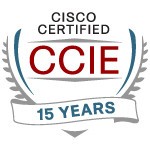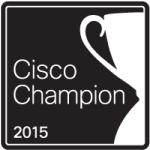Let’s talk about Hybrid WAN or SD-WAN. I do want to start by considering the general state of SDN. Briefly.
A Word about the State of SDN
When will Software Defined Networking (SDN) reach a broad market? That time is coming. As I’ve been saying, most organizations don’t want to be in the software development business in order to automate their networks. Nor do they want software integration “science projects”. They want solutions. We’re starting to see a lot more marketing of solutions now, with less mention (perhaps) of SDN, programming, automation toolkits. Examples: Cisco ACI or APIC-Enterprise. VMware NSX.
One of the key items required in a next-generation solution is innovation. There’s a growing shortage of skilled technical people, and not just in networking. Businesses need to be able to operate their network (and servers, storage, etc.) with people they can afford to hire. So automation solutions (SDN) need to innovate and add simplicity. The ones that don’t work or are overly complex are going to fail in the long run.
As an example, there are several current (pre-SDN) products I won’t name that provide GUI templates for configuring routers. Does that really help? It may help some if the templates leverage, say, CSV files to automate deployment across several devices. I don’t see templates as all that helpful when all it does is embodies the CLI in a GUI template, however. Where’s the innovation in that?
SDN Central says the solution is vendor solutions with partnerships.
Well, maybe. More narrowly scoped solutions strike me as where the bulk of customers’ interest lies right now.
Hybrid WAN or SD-WAN
As witnessed at Network Field Day 9, there is a hotbed of innovation occurring right now in the Hybrid WAN or SD-WAN space. I’m still trying to learn the players. In the hope that it helps, I will list those I know about and provide brief comments and some links.
The other thing to note is that all these vendors have boxes: routers or appliances. One big question is how well they play with existing infrastructure. Are they replacement routers? Do they play well with BGP, OSPF, or (gasp) “Open EIGRP” to integrate with existing routers and failover strategies?
Innovative vendors and startups:
- CloudGenix: see Related Links: CloudGenix below.
- VeloCloud: see Related Links: VeloCloud below.
WAN optimization vendors have realized they potentially have visibility into WAN traffic and can do smart things with that, to add value for the customer. Unified Threat Management (UTM) is one of them. While that’s neat, I look for smart path selection and preferably central control as a minimal requirement for being considered an SD-WAN player.
Vendors I identify as coming to SD-WAN from that direction include:
- Silver Peak
- Riverbed
- Cisco: WAAS integration into the ISR 4000 routers, together with AVC, and IWAN. See here as well. Combined with APIC for Enterprise / Glue Networks.
These vendors are (large) enterprise-grade vendors with some degree of centralized management.
Vendors coming from the direction of link bonding:
- FatPipe
FatPipe does link bonding and traffic distribution across links. They also apparently distribute packets across links, which I’d think would really harm TCP throughput due to out of order packet reception. The traffic distribution aspect may qualify FatPipe as being partial SD-WAN. I’m not seeing centralized control on their website.
- Peplink
Link load balancing, routers, VPN. Not clear: SD-WAN?
- Ecessa
WANworX is claimed to virtualize the WAN (MPLS or Internet-based) using network intelligence controllers. (Routers by another name?) It sounds like they have to be sized and configured by someone and then communicate with cloud management. It’s a bit hard to tell whether Ecessa controls go enough above and beyond bonding and failover to qualify as SD-WAN.
- Mushroom Networks
Mushroom Networks devices bond wired and wireless links. I’m not seeing anything like central management or policy controls from their website, so they may not qualify as doing SD-WAN.
My current impression is that these vendors are more positioned for the small company end of the market.
Others:
- Viptela
Viptela seems to be about SD-WAN with central routing control and “secure routing”. Not clear what they do without registering. And I can’t tell what they do in terms of business policy, QoS / SLA, and re-routing.
- Talari
Talari’s website says they do policy and quality based routing. And intelligent load balancing. With selective packet duplication. Talari Aware centrally configures, analyzes, and monitors. (Like almost any network management product, it’s hard to tell from the datasheet what is included in that.)
This blog is getting to be a bit long, so I’ll leave further research and comments for another time.
Hint for vendors: if I have to register to get basic information about your product, I often go elsewhere instead. Why should I have to dig to find out what your solution does, whether it seems to fit my need, or how it stacks up against your competition? I don’t want to be hounded by salespeople following up the alleged lead. At least provide a checkbox for “please don’t call”!
Comments
Comments are welcome, both in agreement or informative disagreement with the above, and especially good questions to ask the NFD9 vendors! Thanks in advance!
Vendors that consider themselves to be in the SD-WAN space that aren’t listed above: please add a brief comment about yourself!
Related Links: Network Field Day 9
The Network Field Day 9 (#NFD9) web page has a long list of related links to the various sessions. I’ve pulled out the SD-WAN related ones below, along with some other links. The recorded sessions from #NFD9 can be found on YouTube and Vimeo. The video recorded presentations by CloudGenix and VeloCloud can be easily found there.
- Software Defined Reality – NFD9 Redux
- NFD9 Prep: SD-WAN
- NFD9 Homework: CloudGenix
- What’s happening Wednesday at Network Field Day 9
- NETWORK FIELD DAY 9 (NFD9): THURSDAY 2/12/2015
- WHAT’S NETWORK FIELD DAY 9 (NFD9) ABOUT?
- Questions I’m Asking Myself About SD-WAN Solutions
Related Links: CloudGenix
- CloudGenix
- 13 Interesting Questions About SD-WAN
- Cloudgenix impressions from #NFD9
- Presenting at Networking Field Day 9: CloudGenix
Related Links: VeloCloud
- VeloCloud
- Per-Packet Load Balancing on WAN links
- SD-WAN FAQ from Networking Field Day 9
- Velocloud impressions from NFD9
- VeloCloud & Information Brokerage
- Presenting at Networking Field Day 9: VeloCloud
Related Links: Cisco
Hashtags: #NetworkFieldDay, #NFD9, #CloudGenix, #VeloCloud, #GlueNetworks #CiscoChampion #NetCraftsmen
Twitter: @pjwelcher
(As a courtesy to two of the #NFD9 vendors, I’ve included links relating to their NFD9 sessions above.)



Hi Peter,
Very good read and a very good summary. Hybrid WAN or Software Defined WAN definitely enables significant business benefits through innovative technology, a Wide Area Network technology in this case. It leverages the principles of abstraction and extends the advantages of network virtualization, which to date had been predominantly discussed in the context of the Data Center networks, to the Wide Area Networks.
Having said that, intelligent Wide Area Network virtualization (WANv) solutions go beyond a basic overlay model and transport independence. They address the needs for highly secured control infrastructure and a set of characteristics based around application performance, compliance, security policies and transport segmentation. All at Internet scale for on-prem or cloud based deployments. Not an easy problem to solve 🙂
Reach out if I can provide more context for you. Thanks!
@DavidKlebanov
P.S. I work for Viptela.
Peter,
Great article with solid background on this emerging technology and specifics on players in the space. I just published some additional details for you on the Ecessa Blog:
http://www.ecessa.com/blog/going-above-and-beyond-link-bonding-failover-and-into-sd-wan/
Take a look and let me know if you would like to dive deeper.
Mike Siegler
Ecessa Corporation
VP Development & Support
@siegler_mike